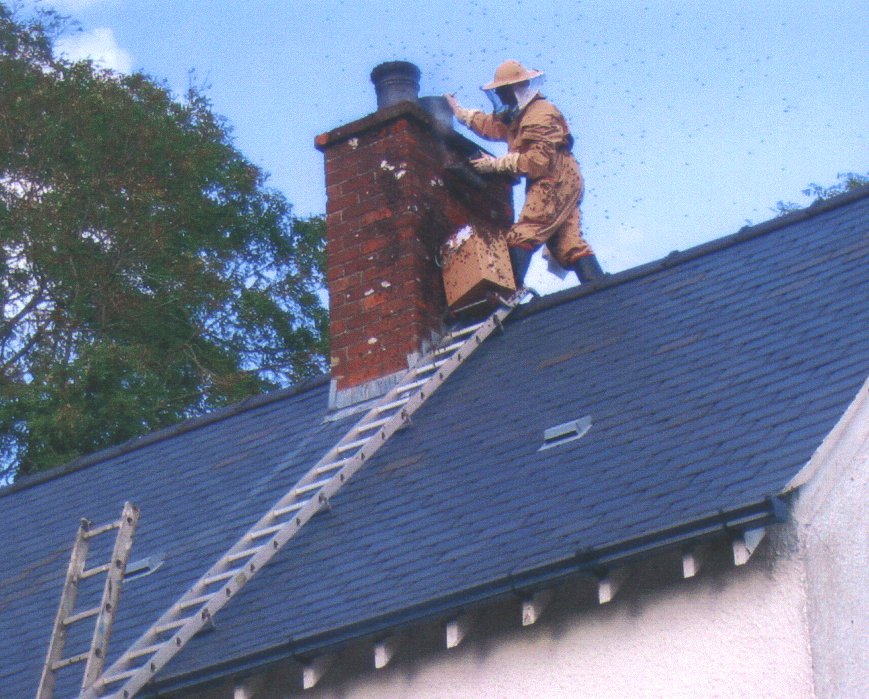
Dealing with a Honey Bee Colony in a Chimney

This chimney colony had apparently been resident for several years. The house had been unoccupied and when the new owners took it over they were faced with hundreds of bees entering the bedroom and the lounge. The colony was in the flue of a disused chimney coming from the bedroom fireplace. The flues are terminated with capped pots with vents round the rim. The colony was in the flue at the front in the picture. The caps are sealed in with cement. Attempts to smoke out the bees by lighting a fire in the old grate were initially unsuccessful. Almost no smoke came out of the vents in the pots. The chimney was therefore explored with chimney rods which eventually dislodged several sacks full of crow's nest materials and other debris. Eventually the rods reached the cap on the pot and it was possible to light a small fire in the old grate. The initial intention was to drive the colony into a swarm box (see photo). A significant part of the colony was collected in this way but it proved difficult to get the queen, partly because safe access to the top of the pot was not possible with just a roof ladder. The box and beekeeper in the photo are covered with bees. (The right foot of the beekeeper is resting on the ridge of a roof that runs at right angles behind the one shown.) The bulk of the bees kept flying back to the top of the pot. Eventually it was decided to kill the colony. This was done with diluted washing-up liquid while continuing to smoke the bees out. Once the pot was clear of bees it was capped with a fertiliser bag tied securely in place. That was left on for a season to prevent recolonisation. The house owner has not been troubled by bees since.
With scaffolding in place it should have been possible gradually to transfer the colony to a beehive left in situ for a few weeks. However, to minimise risk of further infestation it would have been necessary to remove the pot to gain access to the comb which was probably fixed under the support for the pot.